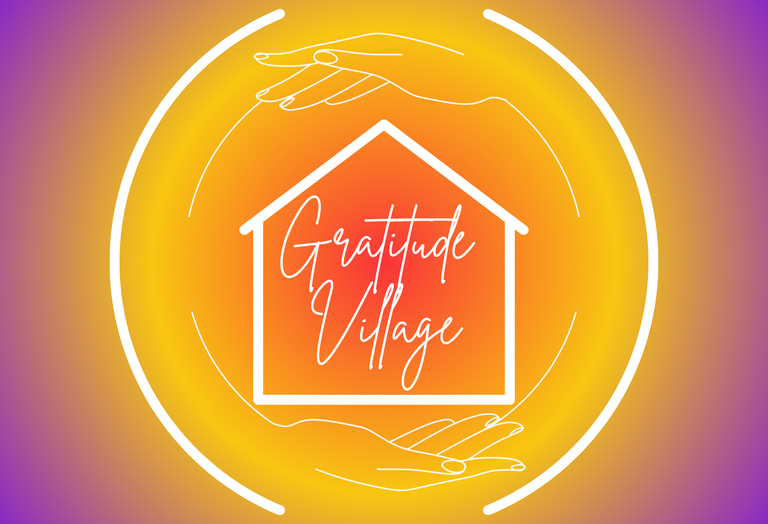Join our next Info Session December 16 from 5:00-6:00 MST Via Zoom (register for link)
The Costs of Lacking Social Connections: A Hidden Crisis
In an increasingly connected world, it’s ironic that people are feeling lonelier and more isolated than ever before. The rise of digital communication was supposed to bring us closer, but in reality, meaningful, face-to-face interactions are declining. This loss of social connection is not just a personal problem—it’s a public health crisis with far-reaching consequences for mental, emotional, and even physical well-being.
Gratitude Village
11/27/20244 min read


The Costs of Lacking Social Connections: A Hidden Crisis
In an increasingly connected world, it’s ironic that people are feeling lonelier and more isolated than ever before. The rise of digital communication was supposed to bring us closer, but in reality, meaningful, face-to-face interactions are declining. This loss of social connection is not just a personal problem—it’s a public health crisis with far-reaching consequences for mental, emotional, and even physical well-being.
The cost of lacking social connections is profound, impacting everything from individual health to community resilience and economic stability. As society becomes more fragmented, the effects of this disconnection are becoming clearer, and the statistics show a worrying trend. Understanding these costs is the first step in addressing what has become a silent epidemic.
The Decline of Social Connections: A Troubling Trend
Over the past few decades, social connections have been on a steady decline. In 1985, the General Social Survey found that the average American reported having three close confidants. By 2004, that number had dropped to just two, and a quarter of respondents reported having no close confidants at all—a striking increase from previous generations. More recent studies have shown that this trend has not only continued but worsened, with significant drops in social interaction across all demographics.
A 2021 study from the Survey Center on American Life reported that the number of Americans who say they have no close friends has quadrupled since 1990. Whereas 3% of people reported this level of isolation in 1990, a startling 12% of respondents in 2021 said they had no close friends. Similarly, the share of people who say they have six or more close friends has been cut in half, from 33% in 1990 to just 16% in 2021.
The COVID-19 pandemic exacerbated this isolation, as lockdowns and social distancing measures forced people apart. According to a 2021 survey by Cigna, 61% of Americans reported feeling lonely, with younger adults and parents of young children reporting the highest levels of isolation.
The Human Costs of Loneliness and Isolation
The effects of lacking social connections extend beyond the emotional and psychological toll of loneliness. The truth is that social isolation has profound consequences on both mental and physical health. People who are socially disconnected face a higher risk of premature death, comparable to the risks associated with smoking, obesity, and lack of physical activity.
A meta-analysis published in the journal PLOS Medicine found that loneliness and social isolation are linked to a 29% increased risk of heart disease and a 32% increased risk of stroke. In another study published in Perspectives on Psychological Science, researchers found that individuals with weak social relationships had a 50% higher likelihood of dying prematurely compared to those with strong social bonds.
Loneliness is also a major contributor to mental health issues. Chronic loneliness is closely associated with higher rates of depression, anxiety, and suicide. In fact, a 2018 report by the health insurer Cigna found that those who reported feeling lonely were more likely to struggle with mental health issues, including higher stress levels and difficulty sleeping. The same study also linked loneliness to a weakened immune system, slower recovery from illness, and higher levels of inflammation, all of which can lead to long-term health problems.
For older adults, the consequences of isolation can be particularly dire. Research from the National Institute on Aging shows that social isolation is a significant risk factor for cognitive decline and dementia. Seniors who are lonely or isolated have a 50% higher risk of developing dementia than those who are socially connected, making it a critical issue for aging populations.
The Economic Impact of Social Isolation
The effects of isolation aren’t limited to health. The economic costs of loneliness and social disconnection are substantial. According to a report by the AARP Foundation, social isolation among older adults is estimated to cost the U.S. economy $6.7 billion annually, largely due to increased Medicare spending on health issues related to loneliness.
For businesses, loneliness impacts the bottom line by affecting productivity and employee well-being. Lonely workers are less engaged, less productive, and more likely to experience burnout, which contributes to higher absenteeism and turnover rates. A Harvard Business Review study estimated that loneliness at work costs U.S. companies as much as $154 billion a year in lost productivity.
The Breakdown of Community
Beyond individual health and economic costs, the decline in social connections is eroding the sense of community that holds society together. Communities that lack social cohesion are more vulnerable to crime, poverty, and social unrest. As neighborhoods become more isolated, the ties that traditionally bound people together—family, friendships, and civic engagement—are fraying, leading to weakened social support systems.
Robert Putnam’s groundbreaking book Bowling Alone highlighted how civic and social engagement has been declining for decades, with fewer people participating in community organizations, religious groups, and volunteer activities. The result is a weakening of the social fabric, making it harder for communities to come together in times of need and reducing the overall well-being of society.
Solutions: Building a More Connected Future
Addressing the loneliness epidemic requires intentional efforts to rebuild social connections on both an individual and community level. One promising solution is the rise of cohousing communities, where people live in intentional, close-knit neighborhoods designed to foster connection and cooperation. Cohousing promotes regular social interaction through shared spaces, community events, and collaborative decision-making, offering a powerful antidote to isolation.
On a broader scale, encouraging civic engagement, supporting community-building initiatives, and creating more public spaces for social interaction can help foster a greater sense of connection. Policymakers, businesses, and individuals all have a role to play in prioritizing human connection as a public health and societal issue.
Conclusion: Rebuilding the Bonds That Hold Us Together
The decline in social connections is a hidden crisis with far-reaching consequences. From health to economics to community resilience, the costs of loneliness and isolation are staggering. Rebuilding the bonds that connect us requires conscious effort and intentional living. By prioritizing relationships and creating environments that support social interaction, we can begin to heal the fractures caused by loneliness and build a future where no one has to face the world alone.
COMMUNITY
Join us in embracing nature, diversity and connection.
Sustainability
DIVERSITY
info@gratitudevillageco.com
720-689-4821
© 2025. All rights reserved.
AFFORDABILITY
Gratitude Village Inc. is a 501(c)3 charitable corporation that values diversity, equity, and inclusion as essential to our mission
Subscribe to our Substack
Refund Policy




Gratitude Village is a Proud Member of these organizations
